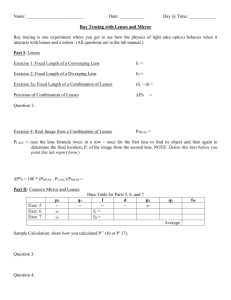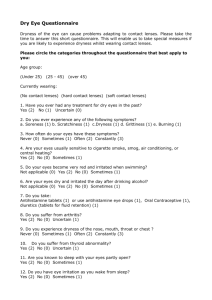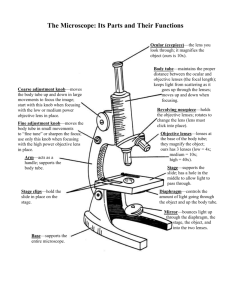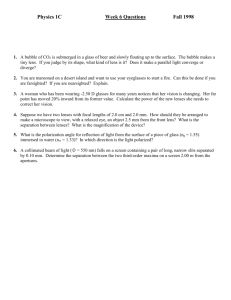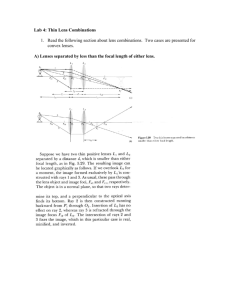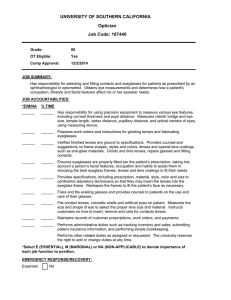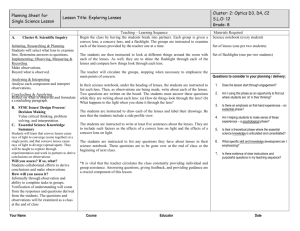Getting “into the mind” of the consumer Have you ever wondered
advertisement
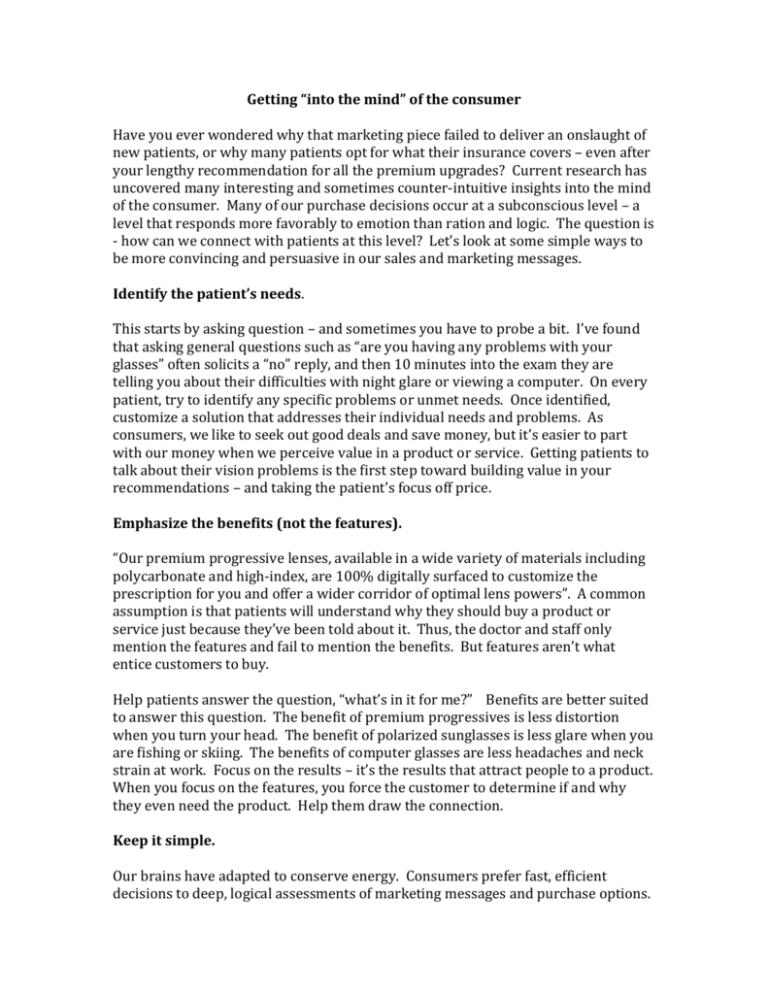
Getting “into the mind” of the consumer Have you ever wondered why that marketing piece failed to deliver an onslaught of new patients, or why many patients opt for what their insurance covers – even after your lengthy recommendation for all the premium upgrades? Current research has uncovered many interesting and sometimes counter-intuitive insights into the mind of the consumer. Many of our purchase decisions occur at a subconscious level – a level that responds more favorably to emotion than ration and logic. The question is - how can we connect with patients at this level? Let’s look at some simple ways to be more convincing and persuasive in our sales and marketing messages. Identify the patient’s needs. This starts by asking question – and sometimes you have to probe a bit. I’ve found that asking general questions such as “are you having any problems with your glasses” often solicits a “no” reply, and then 10 minutes into the exam they are telling you about their difficulties with night glare or viewing a computer. On every patient, try to identify any specific problems or unmet needs. Once identified, customize a solution that addresses their individual needs and problems. As consumers, we like to seek out good deals and save money, but it’s easier to part with our money when we perceive value in a product or service. Getting patients to talk about their vision problems is the first step toward building value in your recommendations – and taking the patient’s focus off price. Emphasize the benefits (not the features). “Our premium progressive lenses, available in a wide variety of materials including polycarbonate and high-index, are 100% digitally surfaced to customize the prescription for you and offer a wider corridor of optimal lens powers”. A common assumption is that patients will understand why they should buy a product or service just because they’ve been told about it. Thus, the doctor and staff only mention the features and fail to mention the benefits. But features aren’t what entice customers to buy. Help patients answer the question, “what’s in it for me?” Benefits are better suited to answer this question. The benefit of premium progressives is less distortion when you turn your head. The benefit of polarized sunglasses is less glare when you are fishing or skiing. The benefits of computer glasses are less headaches and neck strain at work. Focus on the results – it’s the results that attract people to a product. When you focus on the features, you force the customer to determine if and why they even need the product. Help them draw the connection. Keep it simple. Our brains have adapted to conserve energy. Consumers prefer fast, efficient decisions to deep, logical assessments of marketing messages and purchase options. This is why we ask waiters and waitresses for their recommendation on what meal to order, or consult a financial advisor on what stocks to buy. Consumers like to be in control of their purchase decisions, but companies that simplify the purchasedecision process tend to see higher sales. Instead of offering 7 brands of progressive lenses to patients, consider offering two – and recommend one. Studies have show that offering customers too many choices can sometimes lead to paralysis by analysis – and no purchase at all. Be different, but not too much! For the most part, people prefer familiarity. We seek out the brands, products and services we are most familiar with. We like to walk into our local grocery store and know where everything is located. And yet, we are attracted to a certain level of novelty. What is different or better about your practice? Have you added any new technology or redecorated your office since my last exam? Why should I drive past three eye care practices to come to yours? Demonstrate the proof. The subconscious part of the brain that influences our purchase decisions responds favorably to proof. There’s a reason that before and after weight loss ads are so powerful. Trial offers, test drives, testimonials and demos are just a few ways that companies attempt to demonstrate the validity of their claims. As consumers, we are inherently skeptical. The consumer’s mind is not easily swayed by written or verbal claims - it wants proof! Studies in eye care have shown that showing patients the difference between their current Rx and a new Rx led to a significant increase in spectacle sales even if there was only a small change in Rx. Similar results were seen with contact lenses in the EASE study where patients with no previous contact lens experience were given a trial pair of contacts prior to spectacle dispensing – one third of these subjects proceeded to purchase contact lenses.1 Other strategies for demonstrating proof could be visuals (demonstrations, videos, etc), customer success stories and patient testimonials. There is a big difference between communicating with consumers and connecting with them. Once we connect, we begin to earn trust and likeability – two very powerful attributes that drive sales. Often times, it’s not what you’re selling – it’s how you present it. References: 1: Cont Lens Anterior Eye. 2009 Jun;32(3):103-7. doi: 10.1016/j.clae.2009.02.004. Epub 2009 Mar 17.

